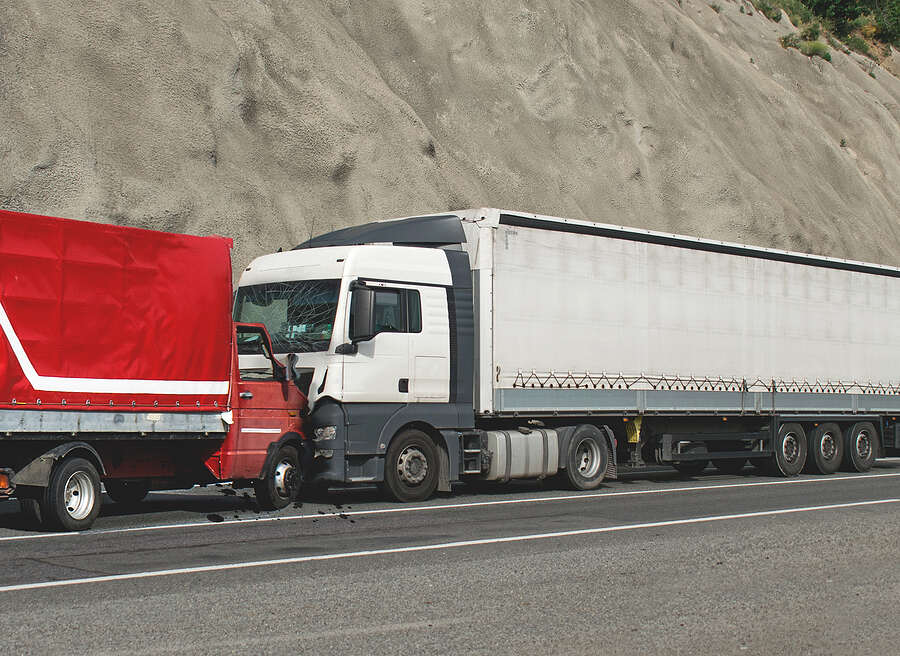
Whether it’s a matter of supplying store shelves with Monster energy drinks and Lucas Oil or ensuring that Lularoe’s independent sellers and their customers receive their shipments, Corona’s economy depends on the transportation of goods into and out of the city.
Unfortunately, despite the importance of the trucking industry to the region, massive trucks can endanger the occupants of other vehicles. Accidents involving commercial trucks are a major source of injury and death.
Why Are There so Many Trucks In Corona?
California is home to 11 ports, many in Southern California, within a few hours’ drive of Corona. These ports are among the world’s busiest not only where much of the country’s imports arrive, but also from where many of our exports leave. Because of this, California and other port states such as Texas and Florida often have higher levels of truck traffic and, subsequently, higher levels of truck-involved traffic accidents.
About 5,000 accidents involve commercial trucks on U.S. roads each year. California accounts for more than 350, coming in with slightly more accidents than Florida, but far fewer than Texas.
While California’s truck accidents spread throughout the state, many occur in Southern California, including Corona and throughout Riverside County, as this part of the state is more prone to congestion in addition to increased traffic to and from ports and airports in the region.
What Are the Hazards of Heavy Truck Traffic?
Commercial trucks are more difficult to maneuver than other vehicle types due to the size and weight of the vehicle. The vehicle’s size accounts for many of the hazards present on the roadway, while the cargo it carries can present additional risks to other roadway users.
Truck-Related Hazards
Commercial trucks, also known as semi-trucks or tractor-trailers, measure around 72 feet long, 13 feet tall, and around 8.5 feet wide. They can weigh up to 80,000 pounds when fully loaded about 20 to 30 times the weight of a passenger car.
Because of this, you will see:
- Significant blind spots on all four sides of the vehicle.
- Up to 40 percent more distance needed to stop.
- Wide turns, which require the driver to swing the truck into other travel lanes.
- A high center of gravity, which makes the truck prone to overturning.
- A high ground clearance, which can trap a smaller vehicle under the truck.
Cargo-Related Hazards
In addition to their awkward size, semi-trucks may transport dangerous materials. An accident could cause the truck’s trailer to rupture and result in other roadway users or rescue personnel coming in contact with dangerous cargo.
Additionally, solid materials can fall from improperly secured trailers or can burst through the trailer doors during an accident. Shifting cargo is one of the leading causes of trucks overturning when negotiating a sharp corner or curve.
6 Common Causes of Truck Accidents in Corona
Like other motor vehicle accidents, human error generally causes truck accidents. Here is a look at some of the more common causes of truck accidents.
1. Distractions
Distracted driving is a major source of injury and death involving all vehicle types, including tractor-trailers. One area of particular concern involves driving distractions as a result of texting.
The three driving distractions are:
- Manual, which cause the driver to take their hands from the wheel.
- Visual, which cause the driver to take their eyes from the road.
- Cognitive, which cause the driver’s thoughts to stray from the task of driving safely.
Texting is so dangerous because it involves all three driving distractions. When a tractor-trailer is traveling at highway speeds, in the time it takes the driver to read or reply to a text, they will have traveled the length of a football field without watching the road or paying attention to the conditions around them.
This is of such great concern to the Federal Motor Carrier Safety Administration (FMCSA) the agency tasked with regulating the trucking industry that it prohibits truck drivers from texting or otherwise using a hand-held communication device while driving.
2. Improper Training
To drive a commercial truck on public roadways, drivers must obtain and maintain a commercial driver’s license (CDL). The driver must learn basic operation skills of the vehicle and trucking regulations. They must also submit to regular drug and alcohol screenings and keep a clean driving record, both on the job and in their personal vehicles.
The training required to handle the day-to-day rigors of operating a commercial truck is by no means complete once obtaining the CDL. The driver if working as an independent contractor or the trucking company that hires the driver must ensure that they receive further training on how to pick up and drop off loads and handle road conditions caused by weather and traffic.
After a truck accident, one of the first things a personal injury attorney will want to know is whether the truck driver had obtained the proper training for the conditions they found themselves in.
3. Improper Loading
Depending on the cargo and situation, the shipper or the truck driver may load the trailer of a commercial truck. In any case, the driver is responsible for properly loading the cargo.
Some of the problems from an improper load include:
- Overloading, which can damage the vehicle’s brakes or even cause them to fail. Overloading the trailer can also make it too heavy and damage the road.
- Stacking cargo too high or in a way that imbalances the load, which can increase the risk of the vehicle rolling over, particularly if the cargo shifts as the truck negotiates a corner or curve.
- Failing to properly secure the cargo, which can result in it shifting in the trailer or spilling out into traffic.
4. Improper Maintenance
A truck driver is allowed to work 11 hours in 24 hours. During that time, they may travel about 500 miles. The miles on a commercial truck add up quickly, and between the miles traveled and the vehicle’s weight, commercial trucks often require more frequent maintenance and repair than other vehicles.
Truck drivers are required to perform a pre-trip inspection on their vehicles before every trip. This inspection not only requires them to properly load and secure their cargo, but maintain the vehicle’s major systems including tires, brakes, and lights in working order. Additionally, they must document all services and regular maintenance performed on the truck.
5. Driver Fatigue
According to the FMCSA, around 13 percent of the truck drivers involved in accidents with their commercial vehicles were fatigued. Extreme driving fatigue creates deficits to the skills that the driver needs for the safe operation of their vehicle in similar ways to alcohol impairment, including difficulty with maintaining a single lane of travel or controlling one’s brakes or speed.
Truck drivers are at high risk of driving fatigue as they often work during the hours of darkness when there is less traffic congestion on the roadways. While this can often help them make better time on their routes, their work disrupts their circadian rhythm, which is the body’s instinct to sleep at night.
Additionally, other factors that can cause a truck driver to become fatigued include:
- Sleep apnea, a sleep-related breathing disorder that disproportionately affects truck drivers.
- The use of over-the-counter medications.
- Sleep inertia, which is common among drivers who sleep in the sleeper berth of their trucks and begin driving quickly after waking up.
6. Construction Zones
Often, work on the 91 Freeway and other major routes around Corona is performed at night, for the same reason that truck drivers work at night: there is less traffic, meaning fewer risks of causing an accident.
Unfortunately, construction zones are often the site of accidents, as they are chaotic places with people and equipment close to road traffic, altered road alignments, and drivers following each other too closely through areas of reduced speed.
According to Caltrans, 189 highway workers died in California through the years, but drivers and occupants of vehicles account for 85 percent of the deaths occurring in work zones. Trucks can cause work zone accidents because of blind spots, narrow roads, and an increased distance required to stop.
Truck Accidents Cause Severe Injuries
More than a quarter of all truck accidents result in an injury either to the truck driver, the occupant of another vehicle, a bicyclist, or a pedestrian. In most cases, someone outside of the truck dies. Truck-involved accidents account for around 13 percent of all traffic-related fatalities. Those who survive the accident may sustain severe or catastrophic injuries.
A catastrophic injury presents a high likelihood of permanent disabilities that will diminish the sufferer’s future earning capacity. The term describes injuries to the organs of the body’s central nervous system: the brain and the spinal cord.
Neither of these organs, despite the crucial role they play in the body, is particularly adept at healing from injury. Brain injuries can cause deficits such as the inability to control emotions, move in a coordinated manner, remember, or communicate. Spinal cord injuries often result in paralysis over large portions of the body.
Other injuries include:
- Broken bones
- Damage to spinal vertebrae and discs
- Burns from chemicals used in the vehicles or that the truck transported
A Corona Truck Accident Injured You, We Can Help
Truck accidents are generally serious, given the size and weight of the vehicle. The injuries and losses incurred in these accidents can result in a lifetime of unexpected impacts and expenses.
If a commercial truck injured you in Corona, you face a complex process for obtaining compensation for your injury. Because of the regulations governing the trucking industry, you need a truck accident attorney to evaluate your claim and gather the evidence needed to prove it.









